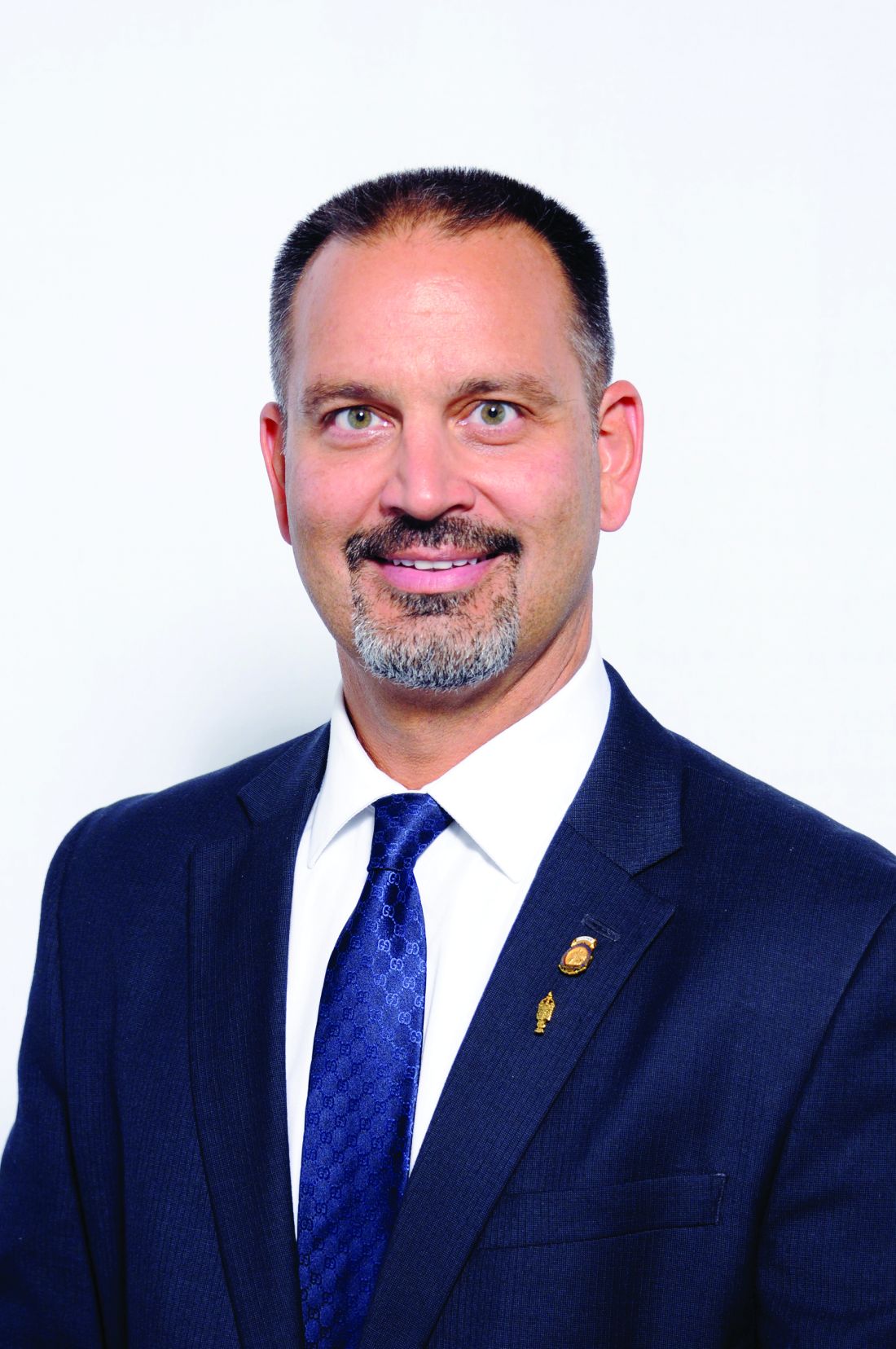User login
SAN DIEGO – Surgeon preference for bouffant versus skull caps does not significantly impact superficial surgical site infection rates after accounting for surgical procedure type, results from a an analysis of a previously randomized, prospective trial showed.
“We are all aware of the current battle that is taking place over operating room attire based on the differences between the AORN [Association of periOperative Nurses] recommendations and ACS guidelines,” lead study author Shanu N. Kothari, MD, FACS, said at the annual clinical congress of the American College of Surgeons.
In 2016, Dr. Kothari, director of minimally invasive bariatric surgery at Gundersen Health System, La Crosse, Wisc., and his associates published results from a prospective, randomized non-inferiority trial on the impact of hair removal on surgical site infection rates (J Am Coll Surg 2016;223[5]:704-11). Patients were grouped by the attending surgeons’ preferred cap choice into either bouffant or skull cap groups. Their analysis concluded that hair left on the abdomen had no impact on surgical site infection rates. “What is unique about this study is that two independent certified research nurses independently assessed every wound in that trial,” he said.
For the current study, the researchers re-examined the data by conducting a multivariate analysis to determine the influence of surgical cap choice on SSIs. Overall, 1,543 patients were included in the trial. Attending surgeons wore bouffant caps and skull caps in 39% and 61% of cases, respectively. Bouffant caps were used in 71% of colon/intestine, 42% of hernia/other, 40% of biliary cases and only 1% of foregut cases. Overall, SSIs occurred in 8% and 5% of cases in which attending surgeons wore a bouffant and skull cap, respectively (P = .016), with 6% vs. 4% classified as superficial (P = .041), 0.8% vs. 0.2% deep (P = .120), and 1% vs. 0.9% organ space (P = .790). However, when the researchers adjusted for the type of surgery and surgical approach (laparoscopic vs. open), they observed no difference in SSI rates for skull cap, compared with bouffant cap.
“Surgeon preference should dictate the choice of headwear in the operating room,” Dr. Kothari commented. “What I would encourage is perhaps a summit between thought leaders in the ACS and the AORN, [to conduct] a true review of evidence and come up with a universal guideline. There are many other issues we need to be focusing on in surgery, and this probably doesn’t have to be one of them.”
“In general, there is a complete and utter absence of any scientific evidence whatsoever for most of the things we are told to do in terms of wearing what we do in the OR,” said invited discussant E. Patchen Dellinger, MD, FACS, FIDSA, professor of surgery at the University of Washington, Seattle. “In fact, there are prospective randomized trials showing that wearing a [face] mask does not reduce surgical site infection, although I’ve been wearing a mask in the OR for approximately 48 years.”
Dr. Kothari reported having no relevant financial disclosures.
SAN DIEGO – Surgeon preference for bouffant versus skull caps does not significantly impact superficial surgical site infection rates after accounting for surgical procedure type, results from a an analysis of a previously randomized, prospective trial showed.
“We are all aware of the current battle that is taking place over operating room attire based on the differences between the AORN [Association of periOperative Nurses] recommendations and ACS guidelines,” lead study author Shanu N. Kothari, MD, FACS, said at the annual clinical congress of the American College of Surgeons.
In 2016, Dr. Kothari, director of minimally invasive bariatric surgery at Gundersen Health System, La Crosse, Wisc., and his associates published results from a prospective, randomized non-inferiority trial on the impact of hair removal on surgical site infection rates (J Am Coll Surg 2016;223[5]:704-11). Patients were grouped by the attending surgeons’ preferred cap choice into either bouffant or skull cap groups. Their analysis concluded that hair left on the abdomen had no impact on surgical site infection rates. “What is unique about this study is that two independent certified research nurses independently assessed every wound in that trial,” he said.
For the current study, the researchers re-examined the data by conducting a multivariate analysis to determine the influence of surgical cap choice on SSIs. Overall, 1,543 patients were included in the trial. Attending surgeons wore bouffant caps and skull caps in 39% and 61% of cases, respectively. Bouffant caps were used in 71% of colon/intestine, 42% of hernia/other, 40% of biliary cases and only 1% of foregut cases. Overall, SSIs occurred in 8% and 5% of cases in which attending surgeons wore a bouffant and skull cap, respectively (P = .016), with 6% vs. 4% classified as superficial (P = .041), 0.8% vs. 0.2% deep (P = .120), and 1% vs. 0.9% organ space (P = .790). However, when the researchers adjusted for the type of surgery and surgical approach (laparoscopic vs. open), they observed no difference in SSI rates for skull cap, compared with bouffant cap.
“Surgeon preference should dictate the choice of headwear in the operating room,” Dr. Kothari commented. “What I would encourage is perhaps a summit between thought leaders in the ACS and the AORN, [to conduct] a true review of evidence and come up with a universal guideline. There are many other issues we need to be focusing on in surgery, and this probably doesn’t have to be one of them.”
“In general, there is a complete and utter absence of any scientific evidence whatsoever for most of the things we are told to do in terms of wearing what we do in the OR,” said invited discussant E. Patchen Dellinger, MD, FACS, FIDSA, professor of surgery at the University of Washington, Seattle. “In fact, there are prospective randomized trials showing that wearing a [face] mask does not reduce surgical site infection, although I’ve been wearing a mask in the OR for approximately 48 years.”
Dr. Kothari reported having no relevant financial disclosures.
SAN DIEGO – Surgeon preference for bouffant versus skull caps does not significantly impact superficial surgical site infection rates after accounting for surgical procedure type, results from a an analysis of a previously randomized, prospective trial showed.
“We are all aware of the current battle that is taking place over operating room attire based on the differences between the AORN [Association of periOperative Nurses] recommendations and ACS guidelines,” lead study author Shanu N. Kothari, MD, FACS, said at the annual clinical congress of the American College of Surgeons.
In 2016, Dr. Kothari, director of minimally invasive bariatric surgery at Gundersen Health System, La Crosse, Wisc., and his associates published results from a prospective, randomized non-inferiority trial on the impact of hair removal on surgical site infection rates (J Am Coll Surg 2016;223[5]:704-11). Patients were grouped by the attending surgeons’ preferred cap choice into either bouffant or skull cap groups. Their analysis concluded that hair left on the abdomen had no impact on surgical site infection rates. “What is unique about this study is that two independent certified research nurses independently assessed every wound in that trial,” he said.
For the current study, the researchers re-examined the data by conducting a multivariate analysis to determine the influence of surgical cap choice on SSIs. Overall, 1,543 patients were included in the trial. Attending surgeons wore bouffant caps and skull caps in 39% and 61% of cases, respectively. Bouffant caps were used in 71% of colon/intestine, 42% of hernia/other, 40% of biliary cases and only 1% of foregut cases. Overall, SSIs occurred in 8% and 5% of cases in which attending surgeons wore a bouffant and skull cap, respectively (P = .016), with 6% vs. 4% classified as superficial (P = .041), 0.8% vs. 0.2% deep (P = .120), and 1% vs. 0.9% organ space (P = .790). However, when the researchers adjusted for the type of surgery and surgical approach (laparoscopic vs. open), they observed no difference in SSI rates for skull cap, compared with bouffant cap.
“Surgeon preference should dictate the choice of headwear in the operating room,” Dr. Kothari commented. “What I would encourage is perhaps a summit between thought leaders in the ACS and the AORN, [to conduct] a true review of evidence and come up with a universal guideline. There are many other issues we need to be focusing on in surgery, and this probably doesn’t have to be one of them.”
“In general, there is a complete and utter absence of any scientific evidence whatsoever for most of the things we are told to do in terms of wearing what we do in the OR,” said invited discussant E. Patchen Dellinger, MD, FACS, FIDSA, professor of surgery at the University of Washington, Seattle. “In fact, there are prospective randomized trials showing that wearing a [face] mask does not reduce surgical site infection, although I’ve been wearing a mask in the OR for approximately 48 years.”
Dr. Kothari reported having no relevant financial disclosures.
AT THE ACS CLINICAL CONGRESS
Key clinical point: Surgeon preference should dictate choice of headwear in the OR.
Major finding: There was no significant difference in the rate of SSI, regardless of whether a skull cap or a bouffant cap was used during surgery.
Study details: Re-examination of a prospective, randomized non-inferiority trial of 1,543 patients, on the impact of hair removal on surgical site infection rates.
Disclosures: Dr. Kothari reporting having no relevant disclosures.

